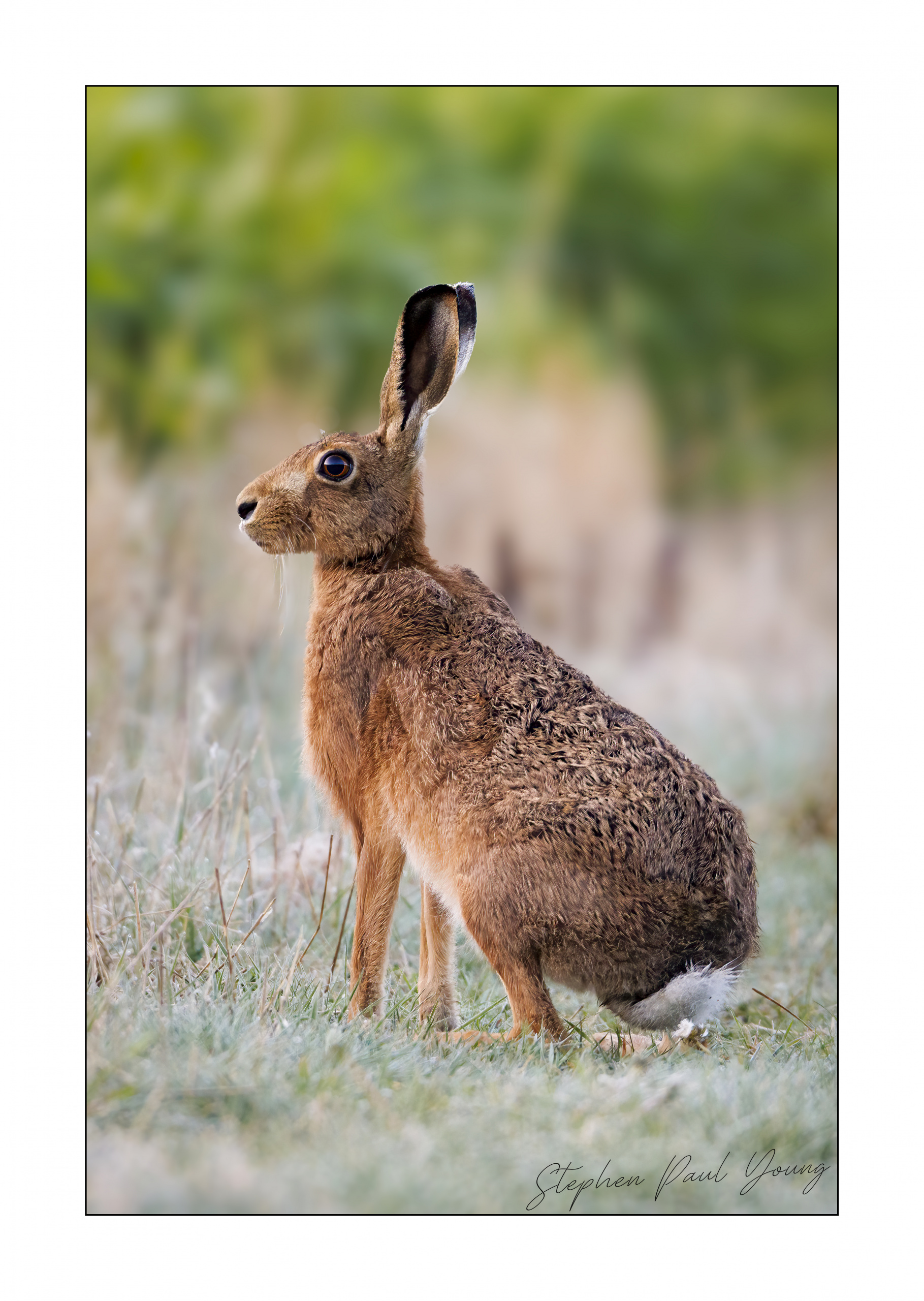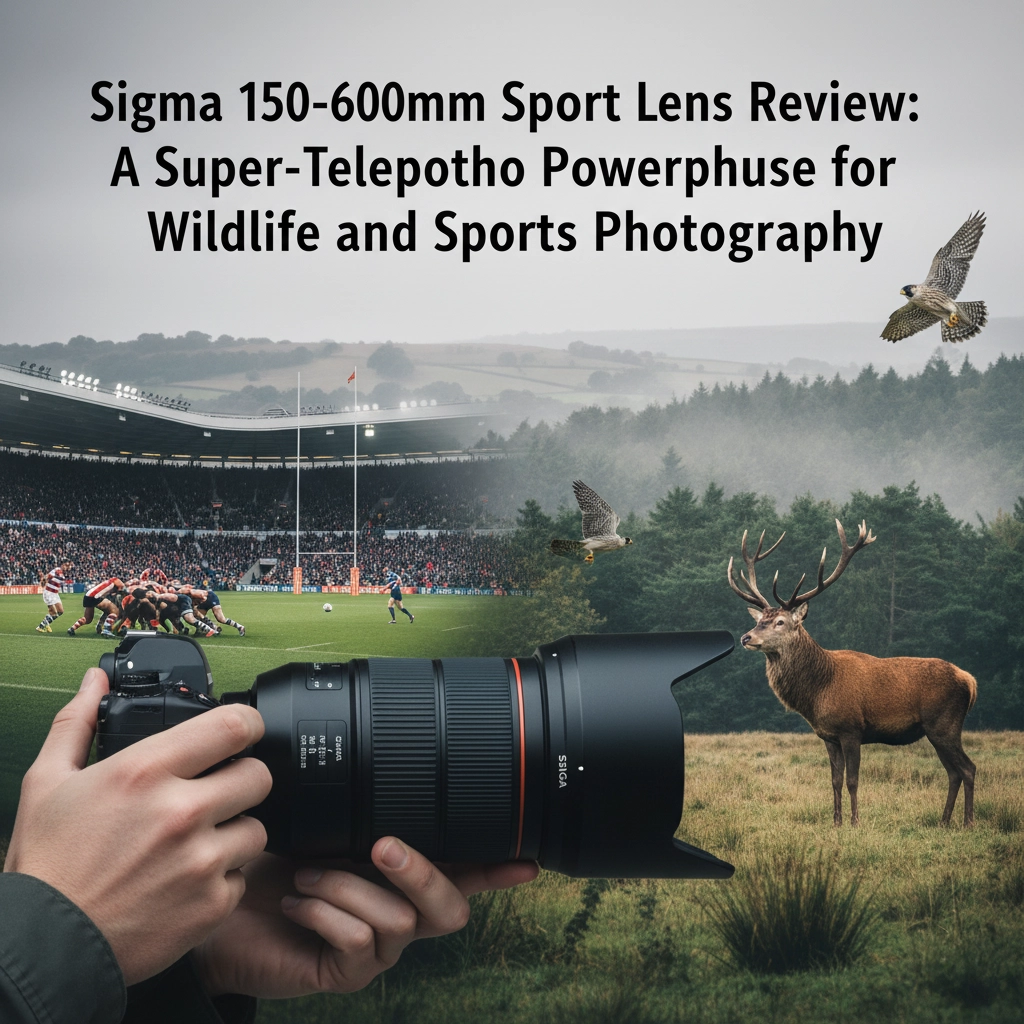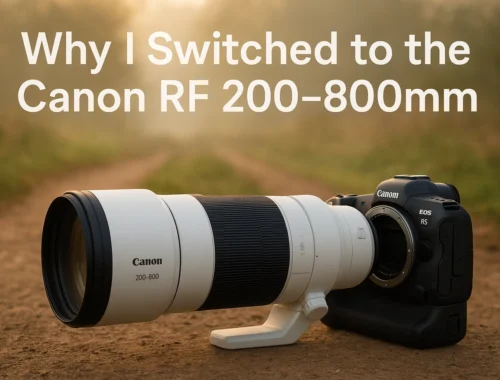
Dawn Patrol at Baughurst Copse: A Morning with the Brown Hare
A New Approach to a Familiar Place
There’s something uniquely rewarding about rising before the sun, heading out into the quiet of the countryside, and waiting for the world and the Brown Hare to wake up. This morning was no exception. I set out early to Baughurst Copse, a place I’ve explored many times, but today I took a different route. Rather than approaching through the usual paths, I came in through the woodland edge and stepped out into the open field just before 5am — a decision that would shape the rest of the morning.
Table of Contents
ToggleArmed with my Canon R5 and the Sigma 150-600mm Sport lens, I was shooting handheld, trusting my instincts and experience to work with the natural light. The goal? To photograph the elusive Brown Hare in its natural habitat during golden hour.
A Surprise Encounter: Fallow Deer at Dawn
As I settled into position, the first creatures to appear were not my intended subjects. A small group of Fallow Deer moved gracefully through the misty field, their silhouettes barely outlined by the faint light of pre-dawn. I captured two photos of them before they vanished into the tree line — a quiet, unexpected bonus.

While the deer were a beautiful sight, I reminded myself to stay focused. This morning’s story wasn’t about them. I was here for the Brown Hare.

The Brown Hare Appears as the Sun Rises
A Golden Moment in the Field
Just as the first rays of sunlight began to peek over the horizon, casting warm light across the dew-soaked grass, I spotted movement in the distance. A flash of long ears, the distinctive outline low to the ground — the Brown Hare had arrived.

This is why I do it. All the early mornings, the cold fingers, the long waits. When a hare emerges into the light, everything else fades away. Over the next 30 minutes, the sun gave me a brief but beautiful window — soft light, minimal wind, and perfect conditions for photographing wildlife.

Wildlife Photography Capturing the Hare: Field Notes
Working handheld with my Canon R5 and the 150-600mm lens allowed me the flexibility to track the hare as it moved through the grass. I didn’t worry about the high ISO settings in the low light; I knew I’d take care of that later in post-processing. The priority was capturing the moment — alert ears, curious eyes, that unmistakable hare posture. I managed to take five solid photographs, each one showing a different side of this remarkable animal.

The Brown Hare is such a powerful subject: it’s both shy and bold, perfectly adapted to life in the open fields yet always alert to danger. Getting close enough to photograph one without disturbing it is a challenge I’ve come to respect.

Hare Photography Tips for Early Morning Shoots
If you’re hoping to photograph Hares, here are a few practical tips based on this morning’s experience:
- Arrive well before sunrise: Hares are most active at dawn, and you’ll want to be in place before they appear.
- Use long focal lengths: A lens like the 150-600mm is ideal for keeping your distance while still filling the frame.
- Stay low and move slowly: Blend into the environment and let the hares come to you.
- Handholding works (with practice): It gives you the freedom to move and adjust quickly, especially when tracking a fast-moving subject.
- Don’t worry too much about ISO: Capture the shot; fix the noise later in post.
Final Thoughts: Why Hares Matter
Photographing a Hare in the wild isn’t just about getting a beautiful image — it’s about connecting with a species that’s deeply woven into the fabric of the British countryside. These animals are increasingly under pressure from habitat loss and changing farming practices, making encounters like this all the more special.

This morning reminded me of the importance of patience, stillness, and respecting the rhythms of the natural world. The light may only last 20 to 30 minutes, but the memory of that time — and the photos that come from it — can last forever.
Like what you read? Fuel my next post with a coffee – hit that PayPal button and keep the caffeine flowing!
[wpedon id=77]
Stephen Paul Young
I’m Steve (Stephen Paul Young), a landscape, digital and film photographer with a deep love for capturing the beauty of nature, light, and atmosphere. Whether I’m out at dawn chasing the perfect sunrise, exploring woodland trails, or experimenting with black-and-white film, photography is my way of seeing the world. I’m drawn to the small details and the big vistas alike, always looking for that moment where light, texture, and emotion come together. For me, photography isn’t just about taking pictures—it’s about storytelling, connection, and the joy of being present in the landscape.
You May Also Like

Sigma 150-600mm Sport Lens Review: A Super-Telephoto Powerhouse for Wildlife and Sports Photography
7 April 2023
Capturing the Magic: 7 Creative Christmas Photography Tips for Stunning Holiday Shots
17 October 2025
